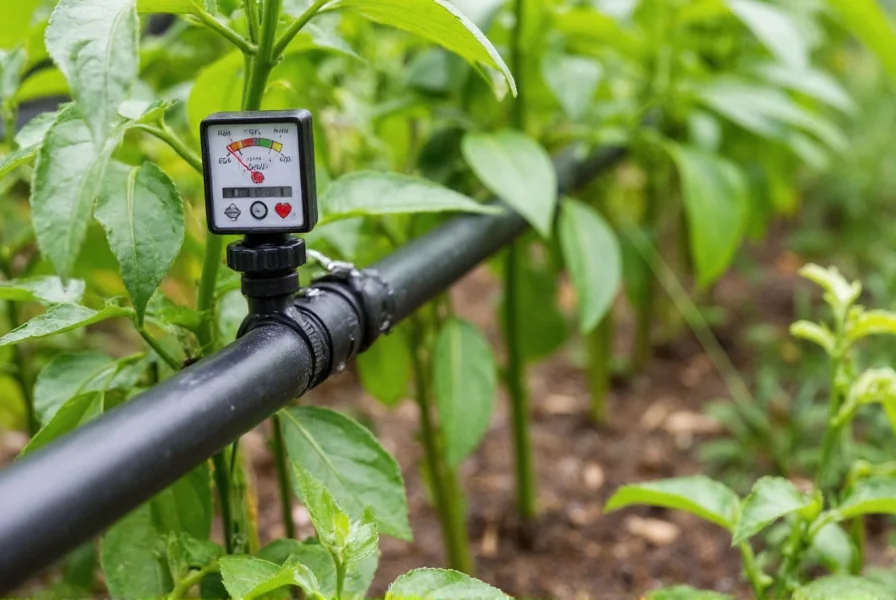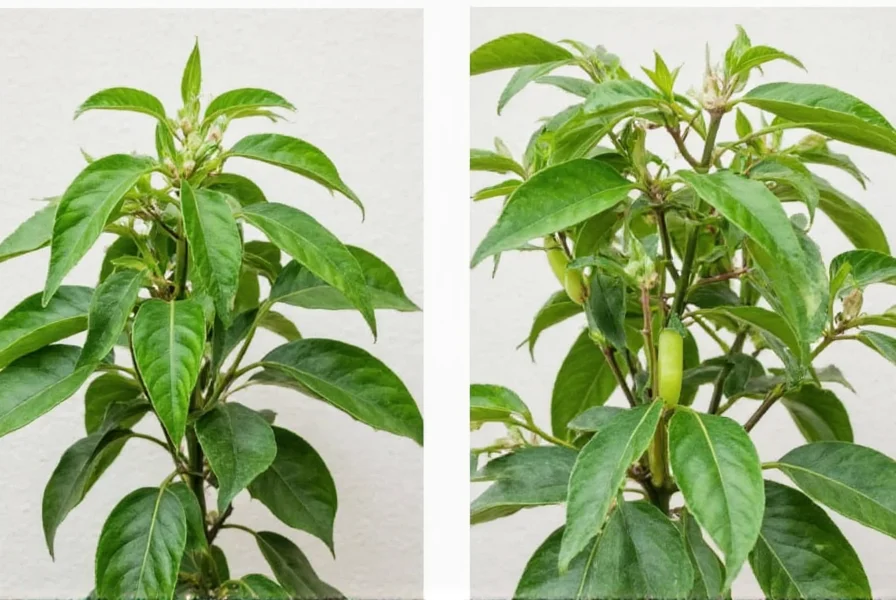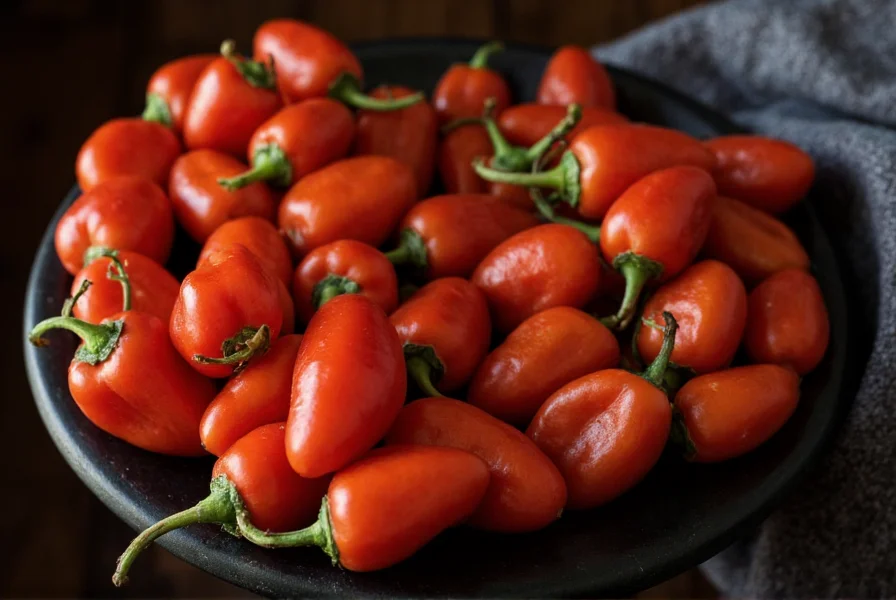Understanding the precise water requirements for pepper plants separates successful growers from those battling disease and low yields. Peppers thrive with consistent moisture levels that mimic their native tropical environments while avoiding the waterlogged conditions that lead to root rot and fungal diseases. This comprehensive guide details evidence-based irrigation practices that optimize pepper plant health across various growing conditions.
Pepper Plant Water Requirements Explained
Pepper plants (Capsicum species) have specific water needs that change throughout their growth cycle. During germination and seedling stages, consistent surface moisture proves critical for successful establishment. As plants mature, their root systems develop deeper, requiring less frequent but more thorough watering. Research from agricultural extension services shows that mature pepper plants typically need 1-2 inches of water weekly, though this varies significantly based on temperature, humidity, and soil composition.
Monitoring soil moisture at root level provides more accurate guidance than following a rigid schedule. The ideal moisture level resembles a wrung-out sponge—moist but not saturated. Commercial growers often use soil moisture sensors to maintain optimal conditions between 60-80% field capacity for most pepper varieties.

Optimal Irrigation Methods for Pepper Cultivation
Drip irrigation consistently delivers superior results for pepper growers compared to overhead watering methods. This targeted approach delivers water directly to the root zone while keeping foliage dry, significantly reducing disease pressure from pathogens like Phytophthora and bacterial spot. Studies show drip-irrigated pepper crops experience 20-30% fewer disease incidents than those watered with sprinklers.
Soaker hoses provide a cost-effective alternative for home gardeners, delivering slow, consistent moisture to the soil surface. When using soaker hoses, position them beneath mulch to minimize evaporation and maintain consistent soil temperature. Hand watering remains viable for small plantings but requires careful attention to deliver water at the base of plants without wetting foliage.
| Irrigation Method | Water Efficiency | Disease Risk | Best For |
|---|---|---|---|
| Drip Irrigation | 90-95% | Low | All pepper varieties, commercial and home use |
| Soaker Hoses | 75-85% | Moderate | Home gardens, raised beds |
| Overhead Sprinklers | 60-70% | High | Avoid for pepper cultivation |
| Hand Watering | 70-80% | Moderate | Small container plantings |
Seasonal Watering Adjustments for Pepper Plants
Successful pepper irrigation requires seasonal adjustments that respond to changing environmental conditions. During flowering and fruit set—the most critical water-sensitive period—peppers need consistent moisture to prevent blossom drop and fruit abortion. Temperature fluctuations significantly impact water requirements; for every 10°F increase above 75°F, pepper plants may require up to 20% more water.
In hot, dry climates, morning watering proves essential to minimize evaporation and prepare plants for afternoon heat. Growers in humid regions should reduce watering frequency to prevent root diseases while maintaining adequate soil moisture. Container-grown peppers typically require more frequent watering than in-ground plants due to faster soil drying.
Avoiding Common Pepper Irrigation Mistakes
Many pepper growers unknowingly sabotage their harvests through improper watering practices. Overwatering remains the most prevalent mistake, causing yellowing leaves, stunted growth, and increased susceptibility to root rot. Underwatering produces similar symptoms of stress but with additional signs like blossom drop and small, misshapen fruit.
Watering late in the day creates ideal conditions for fungal diseases by keeping foliage wet overnight. Inconsistent watering schedules lead to blossom end rot—a calcium deficiency caused by irregular moisture levels affecting nutrient uptake. Experienced growers recommend checking soil moisture daily during fruit development and adjusting irrigation accordingly.

Water Conservation Techniques for Sustainable Pepper Growing
Implementing water conservation strategies benefits both your pepper plants and the environment. Mulching with organic materials like straw or wood chips reduces evaporation by up to 70% while maintaining consistent soil temperature. Drip irrigation systems combined with moisture sensors can reduce water usage by 30-50% compared to traditional methods without compromising yield.
Collecting rainwater for irrigation provides peppers with chlorine-free water that closely matches their natural preferences. Grouping pepper plants with similar water needs creates efficient irrigation zones. For container growers, self-watering pots with reservoirs maintain consistent moisture while minimizing waste.
Special Considerations for Different Pepper Varieties
While general irrigation principles apply across pepper varieties, specific types have unique requirements. Sweet bell peppers need more consistent moisture than hot varieties to prevent thin walls and poor flavor development. Thin-walled hot peppers like jalapeños require slightly less water than thick-walled varieties such as habaneros.
Chile varieties native to arid regions, including some New Mexico types, demonstrate greater drought tolerance than tropical varieties like habaneros. When growing multiple pepper types in one garden, group plants by water needs to optimize irrigation efficiency. Specialty peppers often require more precise moisture control during fruit development to express their characteristic heat levels and flavors.
Monitoring and Adjusting Your Irrigation System
Regular system checks ensure your irrigation delivers optimal results for pepper plants. Test your system weekly during peak growing season to verify even water distribution. Measure actual output by placing collection containers throughout your growing area—this reveals dry spots and overwatered zones.
Adjust irrigation duration and frequency based on weather forecasts rather than fixed schedules. Most modern irrigation controllers offer weather-based adjustment features that automatically modify watering based on local conditions. For precision growing, monitor plant indicators like leaf turgidity and soil moisture at multiple depths to fine-tune your approach.
FAQs About Irrigation for Pepper Plants
How often should I water pepper plants in containers?
Container-grown pepper plants typically need watering every 1-2 days during warm weather. Check soil moisture daily by inserting your finger 2 inches deep—water when the top inch feels dry. Containers dry out faster than garden soil, especially in hot conditions, so monitor closely during heat waves.
What are the signs of overwatered pepper plants?
Overwatered pepper plants show yellowing leaves starting from the bottom, wilting despite moist soil, leaf drop, and stunted growth. In severe cases, root rot develops with dark, mushy roots and a foul odor. The soil remains soggy for days after watering, and plants become more susceptible to fungal diseases.
Can I use tap water for irrigation of pepper plants?
Most tap water works well for pepper irrigation, but high-chlorine water may cause issues. Let tap water sit uncovered for 24 hours before use to allow chlorine to dissipate. In areas with hard water, occasional use of collected rainwater helps prevent mineral buildup. Avoid using softened water as the added sodium harms pepper plants.
How much water do pepper plants need during fruiting?
During fruiting, pepper plants require consistent moisture—about 1-2 inches of water per week. The critical period is when fruits are setting and developing; inconsistent watering during this stage causes blossom end rot and poor fruit quality. Increase watering frequency slightly during hot weather but maintain deep, thorough watering rather than frequent light sprinklings.
Should I adjust irrigation when growing peppers in raised beds?
Yes, raised beds typically require more frequent watering than in-ground plantings because they drain faster. Check soil moisture daily during hot weather, as raised beds can dry out quickly. Install drip irrigation beneath mulch to maintain consistent moisture. Most raised bed pepper plantings need watering every 2-3 days during peak summer, compared to every 3-4 days for in-ground plants.











 浙公网安备
33010002000092号
浙公网安备
33010002000092号 浙B2-20120091-4
浙B2-20120091-4